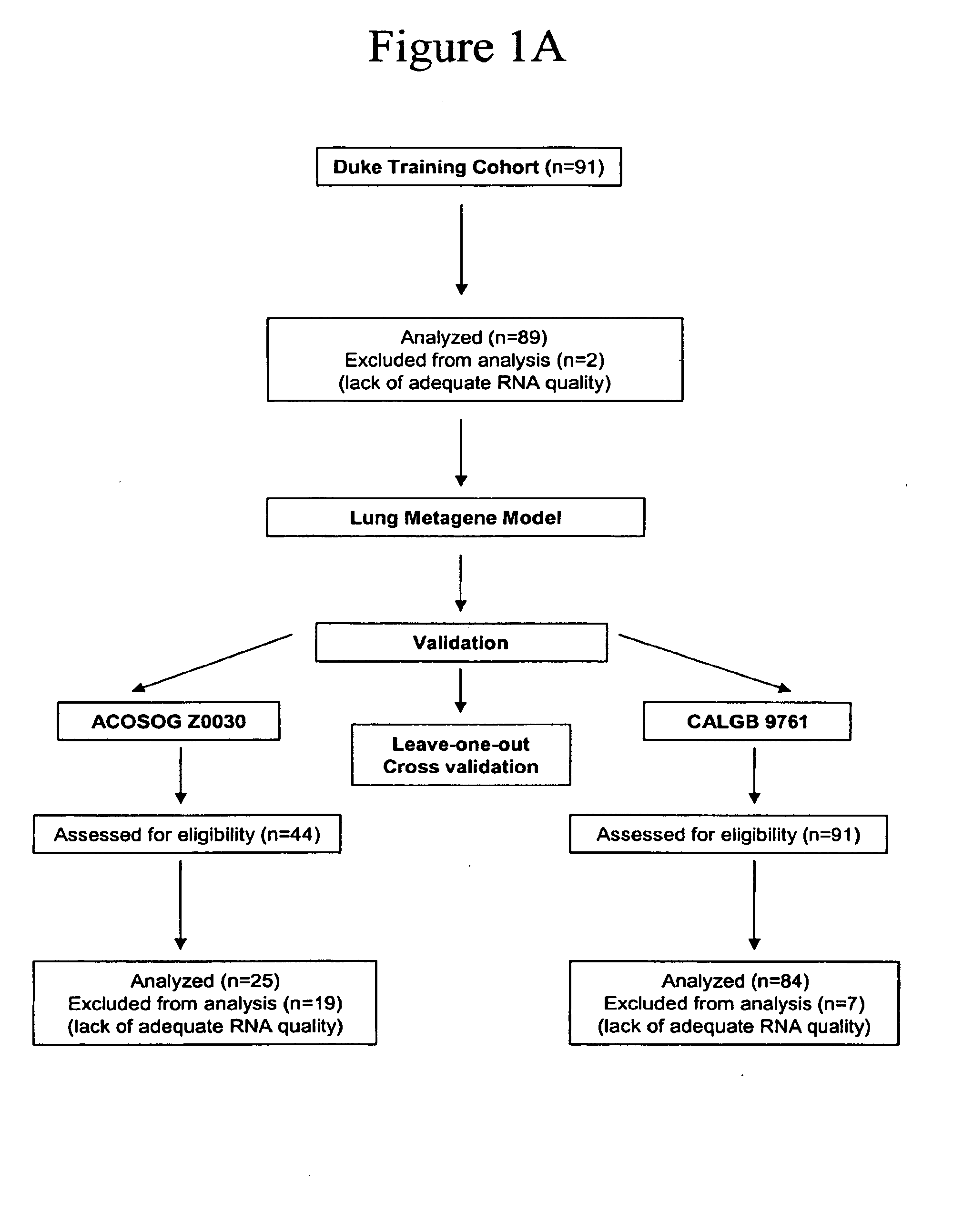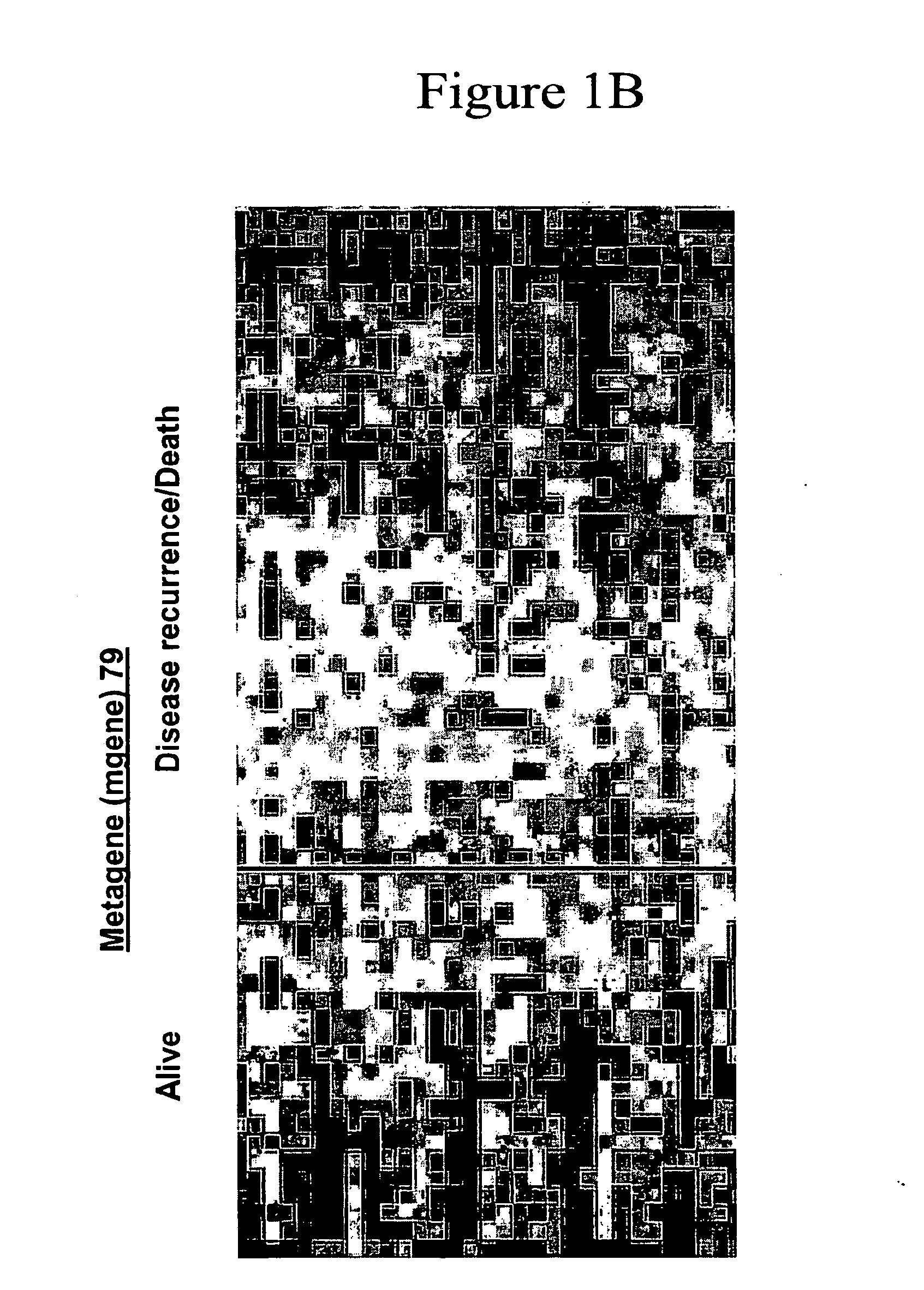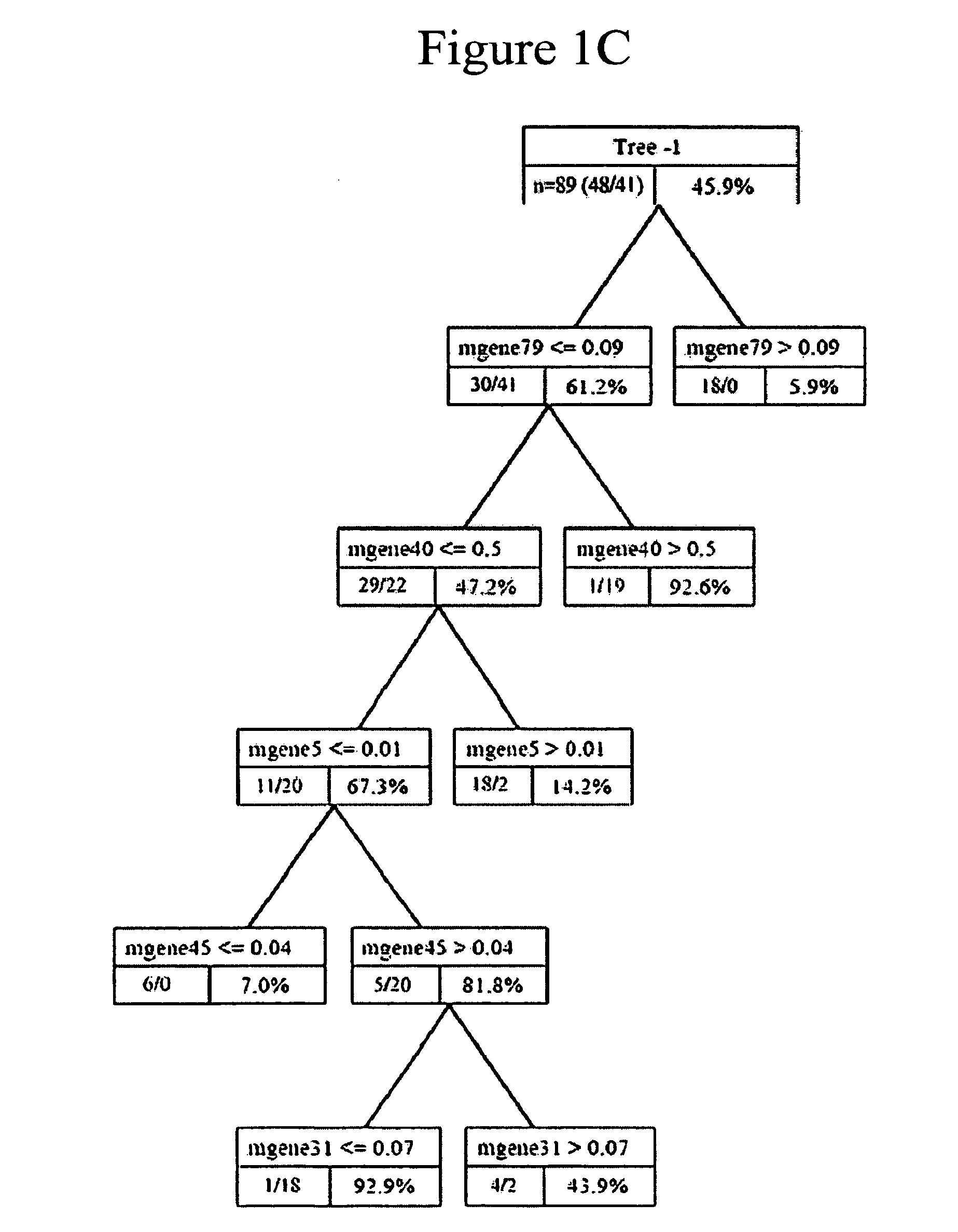Prediction of lung cancer tumor recurrence
a lung cancer and tumor technology, applied in the field of cancer diagnosis and treatment, can solve the problems of cancer deaths worldwide, unnecessarily applied potentially toxic chemotherapy, etc., and achieve the effect of accurate estimation of the prognosis
- Summary
- Abstract
- Description
- Claims
- Application Information
AI Technical Summary
Benefits of technology
Problems solved by technology
Method used
Image
Examples
example 1
Using Gene Expression Profiles for Improved Prognosis
[0154]Table 10 provides the details of the demographic and clinical characteristics of the patient cohorts used to develop and test of the prognostic model (FIG. 1A). All patients in this study were enrolled under IRB approved protocols, after informed consent.
[0155]Lung cancer is a heterogeneous disease resulting from the acquisition of multiple somatic mutations; given this complexity, it would be surprising if a single gene expression pattern could effectively describe and ultimately predict the clinical course of the disease for individual patients. Recognizing the importance of addressing this complexity, we have previously described methods to integrate multiple forms of data, including clinical variables and multiple gene expression profiles, to build robust predictive models for the individual patient25, 26. There are two critical components to this methodological approach. We first generate a collection of gene expression...
example 2
The Metagene Prognostic Model is Valid Across Distinct Subtypes of NSCLC
[0159]The samples used for the development of the prognostic model represented both major histological subtypes of NSCLC (adenocarcinoma and squamous cell carcinoma) as well as all early stages of disease. To assess the general robustness of the prognostic model in the Duke cohort, we examined the predictions of risk as a function of these variables. As shown in FIG. 5, the gene expression based model was consistently accurate across all of the early stages of NSCLC. This is reflected in not only the estimated risk of recurrence but also seen in Kaplan Meier survival analysis for each stage. In addition, the model was equally effective in predicting recurrence for both the common histologic types (adenocarcinoma as well as squamous cell carcinoma) and again, the Kaplan Meier curves demonstrate the prognostic value of the metagene model irrespective of histologic subtype (FIG. 5).
example 3
Validation of the Metagene Prognostic Model in Two Multi-Center Cooperative Group Studies
[0160]Use of a new prognostic model to assess risk of recurrence to inform the decision of whether to use adjuvant chemotherapy requires demonstration that the model is robust when applied to independent heterogeneous populations of patients and conditions of sample acquisition. We therefore evaluated the ability of the model generated from the Duke training set to predict recurrence risk using two multi-center cooperative group studies (ACOSOG Z0030 and CALGB 9761) (FIG. 1A). These sample sets represent the full spectrum of clinical outcomes without any selection for long or short survival.
[0161]We analyzed 25 samples from the ACOSOG Z0030 trial to validate the performance of the Duke-generated predictor of recurrence. As shown in FIG. 3A, the accuracy, using a 50% probability of recurrence as a cut-off, for predicting recurrence in the ACOSOG samples was approximately 72% (sensitivity: 85%, sp...
PUM
| Property | Measurement | Unit |
|---|---|---|
| temperature | aaaaa | aaaaa |
| cellular morphology | aaaaa | aaaaa |
| solubilizing | aaaaa | aaaaa |
Abstract
Description
Claims
Application Information
 Login to View More
Login to View More - R&D
- Intellectual Property
- Life Sciences
- Materials
- Tech Scout
- Unparalleled Data Quality
- Higher Quality Content
- 60% Fewer Hallucinations
Browse by: Latest US Patents, China's latest patents, Technical Efficacy Thesaurus, Application Domain, Technology Topic, Popular Technical Reports.
© 2025 PatSnap. All rights reserved.Legal|Privacy policy|Modern Slavery Act Transparency Statement|Sitemap|About US| Contact US: help@patsnap.com



